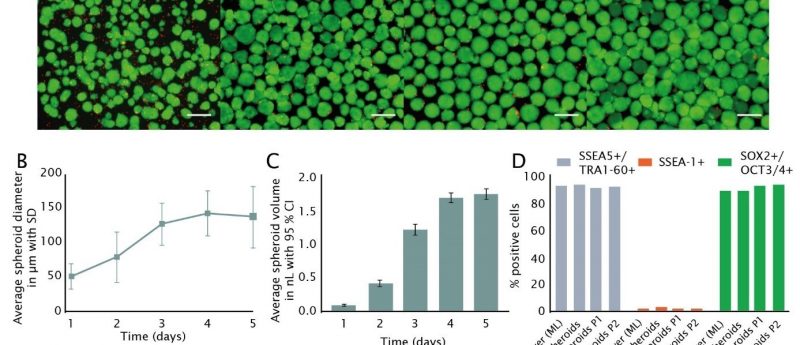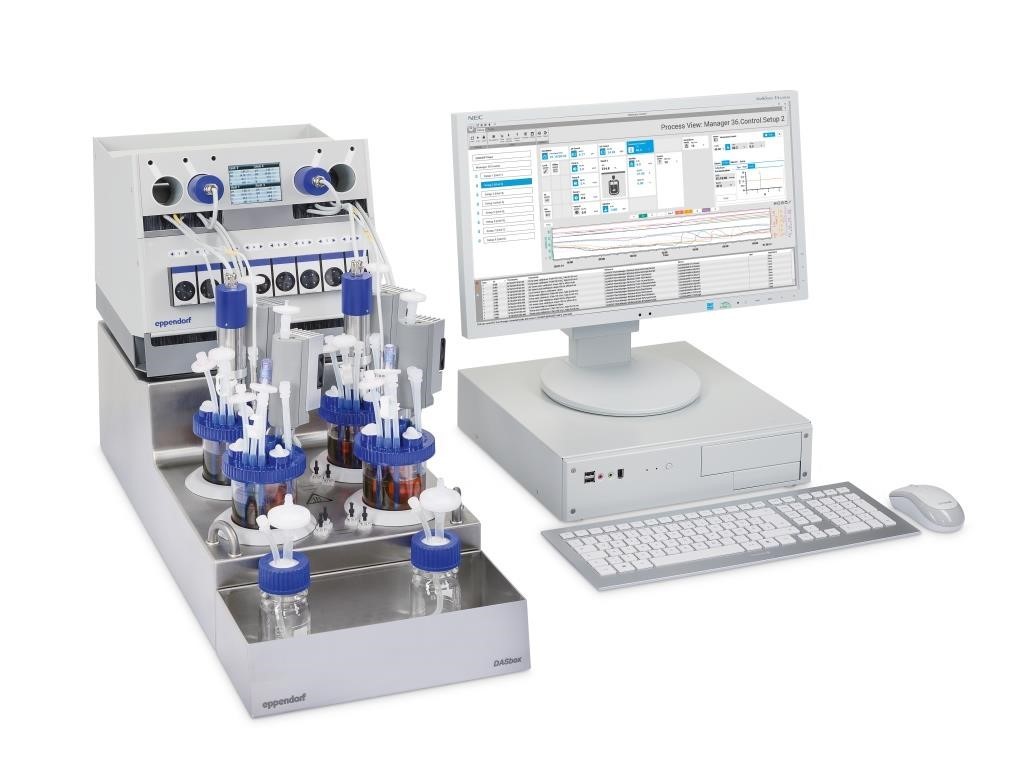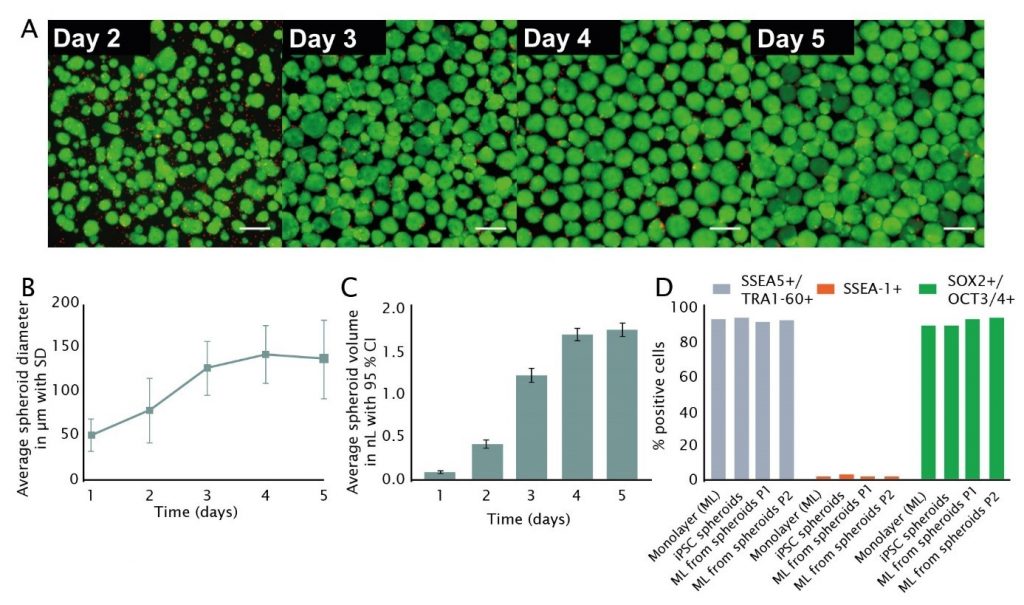DASbox® Mini Bioreactor System: the most compact system for early stage processes

The Eppendorf (Hamburg, Germany) DASbox mini bioreactor system (Figure 1) with its small working volume, compact design, as well as advanced control and information management options, is ideal for research and early development processes.
Regardless of the research segment, the DASbox is a unique mini-bioreactor system suitable for microbial and cell culture applications as well as stem cell applications. It is designed as a 4-fold system and can operate up to 24 bioreactors in parallel. With a working volume of 60-250 mL, the DASbox is the optimal tool for advanced process development and Design of Experiments (DoE) applications.

Figure 1 The DASbox® Mini Bioreactor System.
All critical process parameters can be precisely controlled. Liquid-free temperature control and exhaust gas condensation also ensure easy handling.
In addition to industry standard glass bioreactors, the DASbox can also be operated with the Eppendorf BioBLU 0.3 vessels and all fully instrumented single-use mini bioreactors.
Reliable human induced pluripotent stem cell (hiPSC) spheroid cultivation
Cultivation of hiPSCs in controlled, stirred-tank bioreactors improves homogeneity and allows for scale-up. In dynamic cell culture, mixing is essential for achieving and maintaining a controlled environment [1]. Apart from the impact on differentiation, the resulting shear stress might harm sensitive stem cells. In consequence, agitation should be high enough to keep cell aggregates or microcarriers in homogenous suspension but has to be lower than the critical level damaging cells or aggregates. The chosen bioreactor system should therefore be able to provide low stirring speeds. Figure 2 shows the reliable cultivation of hiPSCs in our BioBLU 0.3sc bioreactor controlled by a DASbox Mini Bioreactor controller [2]. The BioBLU 0.3sc was specifically developed together with our customers and optimized for the cultivation of stem cells.

Figure 2. iPSC spheroid formation in the DASbox Mini Bioreactor.
A: Propidium iodide and fluorescein diacetate staining of iPSC spheroids over time. Scale: 250 μm. B: Development of the average diameter and C: volume during the spheroid formation phase. D: Pluripotency marker expression of monolayer (ML) iPSCs, iPSC spheroids, and monolayer iPSCs after replating from spheroids B–D: n = 3.[2]
Visit our website for more information>>
About Eppendorf
Stimulating Growth. Cultivating Solutions – Expert Partner in Stem Cell Bioprocessing
Large cell numbers are needed for the development of cell therapies and stem cell-based drug research applications. By utilizing its strong synergies in cell culture expertise, bioreactor technology and polymer manufacturing, Eppendorf has emerged as an expert partner for the cultivation of stem cells at large scale.
With our equipment, training programs and application services, we support scientists in resolving cultivation bottlenecks during the development of advanced stem cell-based applications. The need for advanced solutions is increasing. With our expertise, we help to stimulate the growth of your cultures and cultivate solutions tailored to your challenges.
Since 1945, the Eppendorf brand has been synonymous with customer-oriented processes and innovative products, such as laboratory devices and consumables for liquid handling, cell handling and sample handling. Today, Eppendorf and its more than 3,300 employees serve as experts and advisors, using their unique knowledge and experience to support laboratories and research institutions around the world.
References:
[1] Schlottbom C. Controlled Cultivation of Stem Cells – Factors to Consider When Thinking of Scale-Up. Eppendorf White Paper No. 19 (2014)
[2] Koenig L, Ramme A, Faust D, Lauster R, Marx U. Production of Human Induced Pluripotent Stem Cell-Derived Cortical Neurospheres in the DASbox® Mini Bioreactor System. Eppendorf Application Note No. 364 (2018)
This content was supplied by Eppendorf.